Remember those old Simms wading sandals? The ones that looked like, with a pair of knee-high stockings and some lederhosen, we’d be all set for Octoberfest?
I wore them because donning waders to chase backcountry trout on hot summer days was just too damn uncomfortable. If I’m going to make gravy, it’s not going to be in my waders, damnit.
And, truthfully, they were fine. They didn’t stop fine gravel from getting between my feet and the soles, but they served their purpose, which was to keep me cool and relatively comfortable and protect my feet. And, on a drift boat, they were actually pretty ideal.
Wading sandals, perhaps due to the fact that they are impossible to make fashionable, haven’t really enjoyed much success as of late. I finally gave up on the idea of ponying up for a new pair and just took an old pair of Tevas and proceeded to drill a dozen short-shanked screws into the bottoms.
They turned out to be the best pair of wading sandals I ever owned, ankle support be damned.
While wading sandals may not be all the rage anymore, wet-wading this time of year, particularly in small streams where “deep” might mean you get the bottoms of your shorts wet, is still my preferred method of fly fishing. I can stay cool and comfortable and, at the end of the day, I don’t have to peel off a pair of waders and realize that my entire lower half now smells like a ditch-digger’s foot after a day in a fetid, muck-soaked boot.
If you’re looking to ditch the waders and wade wet, there are any number of footwear solutions, from DIY to tailor-made. All come with different pros and cons save for a few universal realities: you’re going to get wet, and you’re not going to keep every grain of sand or gravel out of your footwear.
Saltwater flats boots
Typically lightweight and more sneaker-like, saltwater boots made by brands like Patagonia and Simms are ideal for long days walking the flats. And, if you don’t mind making a few simple, ahem, modifications, they can work for river or small-stream wet wading, too.
Now, I’m not recommending that you buy and modify new flats boots, but if you’re in the market for new ones, perhaps the old pair can be retrofitted for your local trout stream.
The bottoms of most flats booties are pretty solid, so the first old pair I tried to modify with ¼-inch screws took some doing. I ditched the nut driver after the second screw and went with the rechargeable drill. Voila!
Six small drilling screws on the toe section, four on the heel, and I had trashed a pair of flats booties, but created a serviceable and comfortable pair of wading booties with some traction for slippery river rocks. Bonus points for a bit of ankle support.
I prefer the drilling screws to Phillips or flat-head screws, even those with rounded heads. The drilling screws provide more traction (and they’re way cheaper than some of the made-for-fly-fishing spikes on the market)—these ice-racing studs work great too and also a fraction of the price of wading boot studs.
Simple sandals modified into wading sandals
The same disclaimer made above applies here, too: for God’s sake, don’t go and ruin a perfectly good pair of $140 Keens if you don’t have to. But that old pair of Keens? With that thick sole and toe cap? Oh, yeah. Twist in some ¼-inch drilling screws, and you’re good to go. Without the drilling screws? They’re OK on sand and gravel. If you wade rocky streams, they’re ankle-breakers.
And, no, you don’t have to use Keens. As I said above, I took a beat-up old pair of near-death Tevas, and they lasted a couple of summers. Not a bad second life for footwear. Points taken off for absolutely zero ankle support.
Wading boots, sans waders
This is perhaps the easiest, most practical solution, and it involves no creative improvements. Wading boots these days are excellent, and some are perfectly comfortable as moderate-distance hikers, giving you the ability to really cover some ground.
A couple of things I’d recommend if this is your chosen method:
First, invest in a pair of Neoprene booties/socks. They add a bit of bulk to your foot, and wading boots tend to come a bit oversized. It’ll help with the fit, and you’ll be more comfortable. Also, you can fold the Neoprene down over the boot tongue to serve as kind of a gaiter to keep the gravel out.
Second, use spiked boots. Felt-soled wading boots are being outlawed at a pretty regular clip (Yellowstone National Park just made them illegal, for instance). Simple Vibram soles, while better than basic rubber soles, don’t give you nearly the traction that the spiked soles do. If you have an old pair of wading boots without the spikes, add them using the same method and equipment mentioned above.
Double the bonus points for stellar ankle support. Maybe take some points off because wet boots can be a little bulky if you need to hop on the trail and hike a bit.
Actual wet-wading shoes and boots
These are the real deal, and Simms has come a long way since it marketed those clogs disguised as wading attire. The company’s Riprap wading shoes come with rubber or felt soles, and they are pretty nifty. Same rules apply, though—on the rubber-soled shoes, I wouldn’t feel comfortable wading in them without studding them first. But, unlike the DIY options above, Simms Riprap shoes are stud-compatible. So, off you go.
Simms also offers the Intruder wading boot, lined with ankle-hugging neoprene sock insert to keep the gravel out. For many that had pressured Simms to once again make a dedicated wet-wading boot (the company partnered with Keen over a decade ago to produce a wet-wading boot that, while excellent, was eventually discontinued). The new Intruder wet wading boot, unlike wader-friendly boots, isn’t oversized. It’s an ergonomic, agile, comfortable hiker that is at home in the water. To many wet wading fans, this boot has been an absolute godsend. I even know a guy that has bought a couple spare pairs of Intruders in case Simms decides to stop making them again.
At one point, Orvis also offered a wet-wading shoe that came with a Neoprene insert, as well. I’d love to see these suckers back on the market.
And, this summer at the annual International Fly Tackle Dealer Show, wading boots were front-and-center in the New Product Showcase—Patagonia’s new partnership with Danner Boots for the new Foot Tractor actually nabbed the “best in show” award. But it is Patagonia’s other collaboration with Danner—it’s River Salt wading boot, that is targeted at wet waders (or owners of Patagonia’s Middle Fork waders, which have ultra-thin non-neoprene booties). Orvis also outed a new wading boot—which I felt got less attention than it deserved—with the first-ever soles made by Michelin. Time will tell how well these new options serve wet waders.
Wrapping Up
Of the methods above, I have come to prefer options that offer ankle support. As a former high-school basketball player, my ankles are basically shot, but virtually all anglers are best served by shoes that help support your ankles when you’re clambering over slippery rocks all day. And, having the added traction of the spikes not only helps with support, but with confidence.
No matter what method you choose, I would argue that function should come before comfort, albeit not my much. Perhaps you fish a number of different streams with varying substrate, and where wading sandals might work on one creek, a full set of tricked-out boots will work best on others.
The trick is to find that sweet spot, where you’re cool and comfortable and still able to stay upright in moving water.
That way, you can make your gravy the old-fashioned way, on the stove top, with bacon drippings, some half-and-half and some flour.




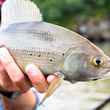











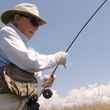




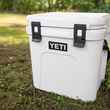
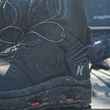




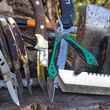




Comments